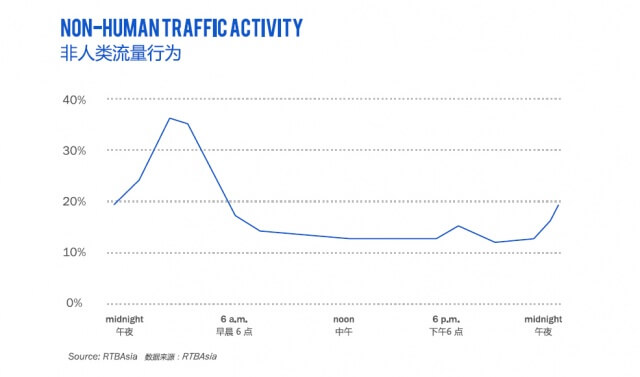Although ad fraud plagues programmatic everywhere, it’s particularly pernicious in China, according to the second in our two-part guide to programmatic in China, based on a report from R3 and RTBAsia.

Non-humans account for 20% of China’s 10 billion daily impressions
The R3 and RTBAsia report estimates that between 15 and 20 per cent of China’s 10 billion daily impressions traded in ad-exchanges, are by non-human bots that register impressions or click on ads.
It is also believed that the majority of email spam and fraudulent activity in the world stems from China. While no one knows for certain what percentage of all the ad impressions clocked up globally are fraudulent, some estimates reach as high as 40 per cent.
According to the whitepaper, The Association of National Advertisers recently conducted a 60-day study to gauge the severity of fraud in the 181 campaigns among 36 of their members, including JNJ, Walmart, and Kimberly-Clark. The study found that bots accounted for 23 per cent of video impressions and 11 per cent of display ads, which they projected would account for $6.3 billion in losses in 2015 alone.
The issue could be so acute in China, posits the report, because so many of computers in the country are still running old versions of Windows infected by malware that enables bots to run in the background whenever the computer is turned on.
In case you missed it:
Another big contributor to China’s fraud problem is search crawlers. “The search engine landscape is more fragmented in China than in other markets,” the report noted. “A considerable number of internet users choose to install crowd-sourcing software to generate fake traffic for profit, or for boosting the traffic statistics of their own online shops or websites.”
RTBAsia estimated that these computers are in the range of 2 to 3 million, and many are home PCs. Traffic from these computers is a mix of real human activity and bot traffic, which is the most difficult type of fraud to screen in programmatic media buying.
Furthermore, data gathered by RTBAsia shows that the level of non-human traffic activity in ad exchanges peaks around midnight. “This is because, unlike humans, bots never sleep; in addition, computing resources and internet bandwidth see the least human traffic at midnight,” said the paper.
To deal with this, the report’s authors recommend that if a DSP is not equipped with anti-fraud solutions, all programmatic campaigns that are not driven by strict audience targeting should be paused between 1 am and 7 am to avoid wasted impressions.

Finally, all parties involved have to be more motivated to deal with this problem, said the study. “In some cases, there is little incentive to detect and weed out this type of fraud because it allows the operations team to buy a great deal of traffic very cheaply, and the publishers need to increase audiences to insure a steady revenue stream.”
This attitude from the industry is, however, self-limiting because ultimately, if advertisers continue to think they’re hitting KPIs for campaigns, when no human has seen their ads, programmatic will not show the results it needs to justify a growth in marketer budgets.





